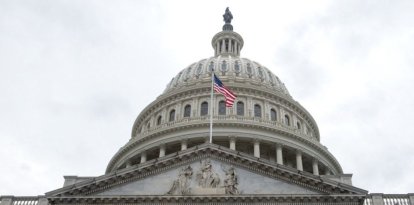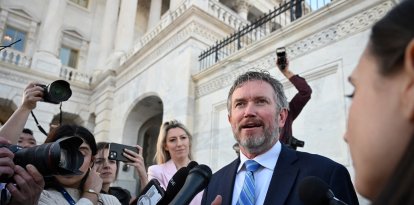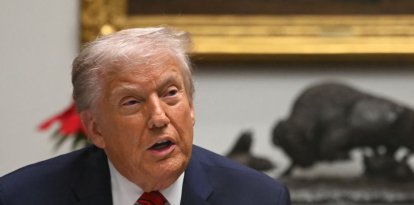Sri Lanka: The collapse of an environmental tyranny
The country followed a green policy of the World Economic Forum, which announced: "This is how we will make Sri Lanka rich by 2025". The organization has since deleted the article.

Una ceilana recoge en un campo en Sri Lanka. Foto:
Sri Lanka was the victim of a decades-long civil war. When it ended in 2009, it was thought that the country could have a bright future. It is a great tourist destination, and with the necessary investments it can become a powerhouse. It is in an enclave that has seen most of the world's growth in recent decades.
And yet today we do not talk about Sri Lanka's spectacular growth, how it has accompanied other economies that are progressing rapidly and lifting their citizens out of poverty. On the contrary, the country is all over the front pages because its economy has collapsed. How did it come to this situation?
Nationalism and socialism
The first step was taken by the country immediately after the end of the civil war. Instead of following the path of participation in globalization, as India or other countries further east have done, Sri Lanka initiated a policy of import substitution. The strategy was not to focus on the sectors in which the country's advantage is greatest, to buy products from abroad, but to manufacture those goods domestically as well, even if they were more expensive and of lower quality.
On the other hand, the country received enormous amounts of capital from China, destined for the creation of large and small infrastructures. 12 billion in the last few years, adding to the country's debt. Sri Lanka has offered as collateral control over the port of Hanbantota, an important place on the so-called new silk road. Sri Lanka currently has a debt of $51 billion, of which it has to repay $7 billion this year. And it has no reserves left.
Rajapaksa and the World Economic Forum, environmentalists
It has run out of reserves because the blow of terrorism plus the incidence of the pandemic have caused tourism activity, which provides a third of the country's reserves, to fall. The fall in reserves was followed by the downgrading of the country's debt rating by international agencies. This situation closed the government's access to international markets. The country began to accumulate foreign debt. Sri Lanka's president, Gotabaya Rajapaksa, then resorted to a ban on fertilizer imports.
Rajapaksa did not adopt this measure as a matter of economics, however. The proposal was part of the political program with which he won the elections in 2019. At the last UN climate meeting, Gotabaya Rajapaksa solemnly declared Sri Lanka's commitment to an agricultural revolution "in sync with nature". The truth is that his policy has been in sync with environmentalist ideology.
Of course, he had the backing of the World Economic Forum (WEF), an organization that rivals the Sao Paulo Forum in its enthusiasm for green ideology. The WEF published an article in 2018 titled "This is how we will make Sri Lanka rich by 2025". The WEF has deleted its article, perhaps due to lack of confidence that by 2025, and following the WEF's green prescriptions, Sri Lanka is going to be a rich country.
The starvation diet
President Rajapaksa justified the decision to impose organic agriculture with these words: "The government must guarantee the right of the people to a non-toxic diet, which produces a healthy and productive citizen". But that diet is not reaching households. His policy of eradicating fertilizers has been a success: their use has largely disappeared. But the consequences have not been long in coming: four out of five citizens are going hungry.
Agriculture accounts for less than 8% of the country's economy, most of which relies on services (almost 60% of GDP). But the effect of the fertilizer ban is so dramatic that it has provoked large mobilizations in the country, forcing the government to backtrack on its environmental policy.
However, although it has been lifted, the effects of the ban continue. Fertilizer producers do not dare to export their product to Sri Lanka, and the country has continued without them. According to Reuters news agency, experts believe that the policy is causing a 30% drop in agricultural production. And it cites the case of one farmer in the country, who says, "Last year, we were getting 60 bags" of green jade out of these two acres. "But this time, it has been only 10," he adds.
The country, which had been self-sufficient in rice production, has had to import $450 million worth of rice. The drop in production has also decimated agricultural exports, which has contributed to the increase in foreign debt.
The collapse
The government's socialist, environmentalist and anti-economic policies have led the country into chaos. Sri Lanka has run out of the capacity to import anything. Fuel has stopped flowing into the country. And the fuel queues, which used to last several hours, have become meaningless because there is no fuel to distribute. Without fuel, there is no economic activity and the situation deteriorates rapidly. The policy against domestic production, together with the impossibility of importing, has meant that there is no food in the country. Hunger is spreading throughout the country, with only one in five citizens escaping it.
The Sri Lankan rupee has been devalued, and inflation is raging. Even in a crisis like this, Sri Lanka's central bank has decided to raise interest rates by one point to 15.5%. This is actually a necessary step, if the situation of rampant foreign debt and inflation is to be curbed.
The party
Products are not reaching the markets. And the Sri Lankans are leaving their homes. Hundreds of thousands of them, to flee the country. Others have entered the Presidential Palace to greet President Rajapaksa. The assault on the presidential palace has become a party that lasts several days. Citizens occupy every room, and take pictures for social media.
A video shows how people fight the heat by bathing in the presidential pool:
Citizens occupy every room, and take pictures of themselves for social media. As The Guardian reports, the assailants have set up communal kitchens to replenish their strength.

























